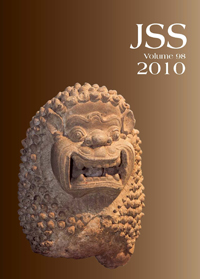The French contribution to the rediscovery of Dvāravatī archaeology
Main Article Content
Abstract
A few generations of French scholars, in close association with their Siamese counterparts who played a leading role, unearthed the civilization of Dvāravatī, by that time all but forgotten. Their first investigations extended from the end of the 19th century to the beginning of the 20th, when French explorers from Cambodia started revealing to the world, and interpreting, what the Siamese had discovered in their territory. The second stage, in the 1920s, was personified by George Cœdès, who identified and named the characteristic Dvāravatī style of art, determined its chronological framework and its source of inspiration in Gupta India, and suggested its Mon provenance. The next generation, from the 1930s to the 1950s, was dominated by Pierre Dupont, who methodically studied Dvāravatī achievements in architecture and sculpture. During the 1950s and 1960s, Cœdès again became involved with the reading of inscriptions that confirmed his earlier hypotheses. The last Frenchman considered here is Jean Boisselier, whose investigations beginning in the 1960s led to the discovery of a pre-Dvāravatī civilization and the local origins of an original Buddhist tradition that has been perpetuated to the present day in Thailand.


